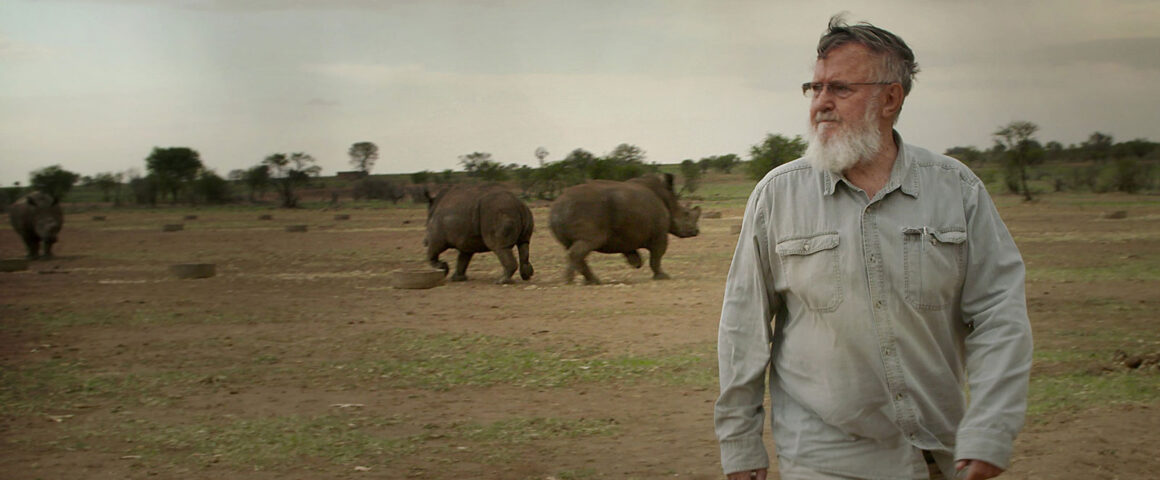Directed by Shaul Schwarz (“Aida’s Secrets”) and Christina Clusiau, Trophy is a riveting but often difficult to watch documentary which examines the issue of trophy hunting and species preservation from the point of view of hunters, breeders, farmers, and wildlife conservationists. The subject became a leading news story in June 2015 when Minnesota dentist Walter Palmer killed a male lion named Cecil, a popular tourist attraction, outside Zimbabwe’s Hwange National Park, setting off worldwide protests. Though many argue for the banning of all trophy hunting, others contend that legal, regulated hunting can benefit conservation, support the local population, and stop the accelerating loss of species due to poaching.
The position of the U.S. Fish and Wildlife Service is to support “legal, well-regulated sport hunting.” For the hunter, killing an animal is a source of pride, a knowing that they are carrying on a tradition romanticized by Theodore Roosevelt and Ernest Hemingway. The goal for the hunter is killing as many of the “Big Five” — buffalo, elephant, leopard, lion, and rhino — as they can. The film shows, however, that there is no longer anything romantic about big game hunting. It has become a commercial enterprise where people pay hundreds of thousands of dollars for the right to kill the animal they buy at auction during yearly conventions. According to the film, the going rate for a 14-day, single elephant hunt is about $80,000.
One of the “good guys” in Trophy is John Hume, who runs the Buffalo Dream Ranch in South Africa as a sanctuary for rhinos. Home to 1,500 rhinos, Hume strives to breed two hundred new ones each year. Using a stun gun to tranquilize the animals and remove their horns without killing them, he claims that this action protects them from poachers who will kill them for their horns, which can bring in millions of dollars in some Asian markets. Unfortunately, however, he cannot legally sell the horns and complains bitterly about all the restrictions. Another of the film’s main subjects is sheep rancher Philip Glass (no relation to the composer). For him, hunting has always been a part of his life.
He talks about his love for the animals he kills, saying that the bible tells him that man shall have dominion over the animals, a passage he claims gives him a license to kill without feeling guilty. One can only wonder at the thought process that equates loving an animal with putting a bullet through its head. Chris Moore leads a campaign against poaching in Zimbabwe, trying to protect elephants, but we later find out that Moore works for hunters, earning fees that ostensibly support conservation efforts. The film maintains an “above the battle” approach, but occasionally reveals its point of view. One woman says that she does not mind killing crocodiles for handbags because they are so mean.
We see a different view of the menacing animals later in the film, however, when the camera zooms in the eye of a crocodile bound for transport that says all we need to know about the importance of handbags. If we learn one thing from Trophy, however, it is that wildlife hunting is a thorny and complex issue which does not lend itself to simple solutions. Even someone whose job it is to protect the wildlife knows that there are times when he has to kill an animal to protect the local people from predators or simply because there is a need for food. His feeling, unlike the exhilaration of the hunter, however, is one of sadness and remorse.
In one scene we see lions attack and kill a family’s livestock, an act that prompts the family to move its last cow into their home and also puts their own lives in danger. In spite of the moral ambiguity the film reveals, the fact is that wildlife populations in Africa are declining. Scientists believe that Africa may at one time have held as many as 20 million elephants; by 1979 only 1.3 million remained — and a recent survey found that, in the seven years between 2007 and 2014, the numbers plummeted by at least thirty percent.
Not only African elephants are threatened, but the population of rhinos and lions are steadily decreasing. The culprit is not any one group or way of life but a system that looks at animals as a commodity with a price tag, not as sentient beings whose life is sacred. In that regard, we can thank Schwarz and Clusiau for allowing us to look at the options that are available to preserving these species before they exist only in historical photos we will one day show our grandchildren.




'Movie Review: Trophy (2017)' has no comments